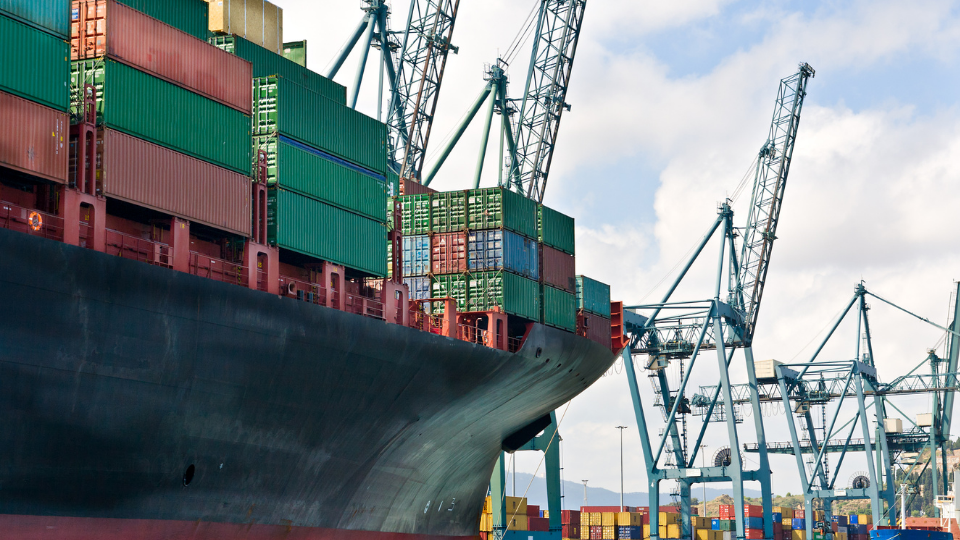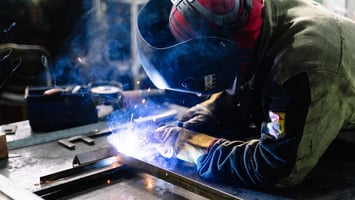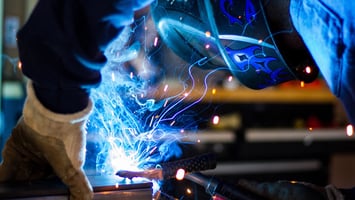Each fabrication shop has a unique inventory of metal products. And each one uses a different...
Kryton Metals Blog
How Partial Tariff Lifts on Steel & Aluminum Could Help Metal Manufacturing

Can partial tariff lifts on steel and aluminum help manufacturing in the United States? Some experts think so. Others have different ideas. So, who’s right? And what do international supply chain disruptions mean for the American steel fabrication industry?
Here’s what manufacturers should know.
What Are Tariffs?
Tariffs are government taxes on imports and exports from other countries or supranational unions. They act as a regulatory firewall against foreign and domestic trade. But they’re also a significant source of revenue for the federal government, which means many economists and politicians refuse to lift them.
However, international tariffs can place a tremendous burden on the supply and demand of aluminum and steel products. For example, American steel imports often incur a tax as high as 25%. Manufacturers and consumers must absorb those extra costs. So, countless innovations may fall through the cracks as metal fabrication prices skyrocket.
Exploring the Tariff Agreement Between US and EU
The United States (US) and the European Union (EU) recently agreed to ease trade tariffs on aluminum and steel products. In 2018, the US government imposed a 25% tax on steel and a 10% on aluminum. These tariffs were rooted in the trade mess due to the surplus of global steel, which most analysts blame on China’s excessive investment in production facilities. The flood of steel greatly depressed market prices, which made it difficult for American steelmakers to compete. Recent negotiations reached a deal to lower tariffs, making raw materials more accessible to the global market.
The average metal fabrication shop can now enjoy duty-free resources on specific materials. And while the federal government loses tremendous revenue, the nation’s manufacturing industry thrives. In turn, that lost revenue reappears in the form of opportunities, innovations, and job security.
Meanwhile, some economists have mixed emotions regarding the new US-EU trade agreement. That’s because the deal serves a dual purpose. For one, it helps lessen some of the supply chain disruptions across America. For two, it limits the import of cheap Chinese steel from unscrupulous European dealers. Thus, the United States stands a better chance of regaining its position in global trade.
However, partially lifting tariffs on steel and aluminum may become a double-edged sword. As prices drop, and materials are more readily available, CNC machining quality could suffer as well. More fabrication shops will have access to regulated raw materials, which could mean oversaturation of the market. Lowered tariffs are not a fix-all.
Experts need more than fewer taxes to keep metal manufacturing competitive and precise. Some things manufacturers can do to remain relevant is to improve their quality systems (ISO certifications), on-site efficiency, and operational transparency. Fabrication shops like KRYTON Engineered Metals are among the few that can keep up with the increased demand.
Metal Fabrication Pricing and Lead Times in 2022: Two Predictions
It’s anyone’s guess what the average metal fabrication facility will look like in the future. But with such momentous opportunities, most well-positioned metal fabrication shops should flourish. Here are two reasons why:
#1. Metal Manufacturing Will Shift Back to the United States
American fabrication shops should get ready for an industry boom despite being overlooked and underrated for so long. The industry is currently worth over $20 billion, with estimates reaching over $24 billion within the next five years.
America outsourced a substantial portion of its manufacturing industry for decades. But fab shops quickly return to the United States as international raw materials prices soar. Plus, automation makes it easier for manufacturers to meet supply and demand challenges. So, it’s a win-win situation for our country and economy.
DID YOU KNOW: The partial tariff lift could help ensure higher-quality steel and aluminum at a lower cost.
#2. The Price of Steel Will Decrease
The global supply chains haven’t been the same since COVID. But many experts predict a steep drop in steel prices within the coming year. Shortages in 2021 were the result of several factors: blocked access, high tariffs as well as steel mills shutting down for extended periods due to COVID, causing a lack of supply. So, CNC machine shops ran at lower capacity because of the lack and delays in the material supply chain. Then the chain reaction began, and the rest is history.
In 2022, economists predict something different. Many are seeing steel prices beginning to plateau or even fall. Aluminum and stainless steel prices are still volatile and increasing, but with mills getting back to full operating capacity, the hope is for the material prices to begin to fall back too.
As manufacturing returns to the US and raw material prices decrease, our economy should bounce back from the 2020 recession. However, it will require a concerted effort from all industry sectors to take full advantage. Moreover, fab shops must harness cost-effective tactics for metal tooling to keep prices affordable and maintain the momentum. All of these factors are best supported by a company that has a strong quality system with an ISO certification.



